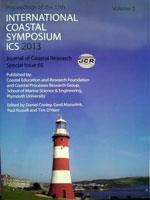Lee, D.H., Yun, H.S., Jung, H.I., Cho, J.M.., Cho, J.H., Jung, W.C. and Hwang, J.S., 2013. Transformation of Vertical Datum Surface in the Coastal Area using Hybrid Geoid Models
The national height system (NHS) of Korea is currently separated into land and sea, which makes it difficult to acquire homogenous and accurate height information throughout the nation. The NHS for land is defined by a bench-mark (BM) based on the mean sea level (MSL) of Incheon bay, which is managed by the National Geographic Information Institution (NGII), and that for seas is defined by the tidal bench-mark (TBM) based on the local MSL, which is managed by the Korea Hydrographic and Oceanographic Administration (KHOA). This is because these two institutions have different agendas in the use of height data. Therefore, once the differences between the vertical datum surfaces (VDS) on land and sea are considered, such differences could be converted into height information that is measured with different VDS. This study was conducted to homogenize height information for land and sea using the differences between hybrid geoid models fitted to the VDSs for land and sea and to develop a VDS transformation model that allows accurate transformation, with which to continuously and effectively unify the separated NHS throughout the whole area in Korea. For a precise hybrid geoid model, a precise gravimetric geoid model was first developed using the remove and restore (R-R) technique, based on all available gravity observations. Next, the differences between the height results based on each VDS of land and sea using 70 TBMs that had both results were compared and analyzed, and the geometric geoid height of TBM was calculated based on the VDS of land and sea through the precise GPS observations for 4 or more hours. Finally, the gravimetric geoid model was fitted to the acquired geometric geoid heights of TBMs to develop two hybrid geoid models, each of which is based on the VDS of land or sea, and to determine the differences between the two models as the VDS transformation model. The VDS transformation accuracy based on this model was approximately ±3 cm. It is expected that the results of this study can help minimize not only the confusion in the use of land and sea spatial information due to the disagreement between the two NHSs in Korea, but also the economic and time losses in the execution of coastal development and disaster prevention projects in the future.





